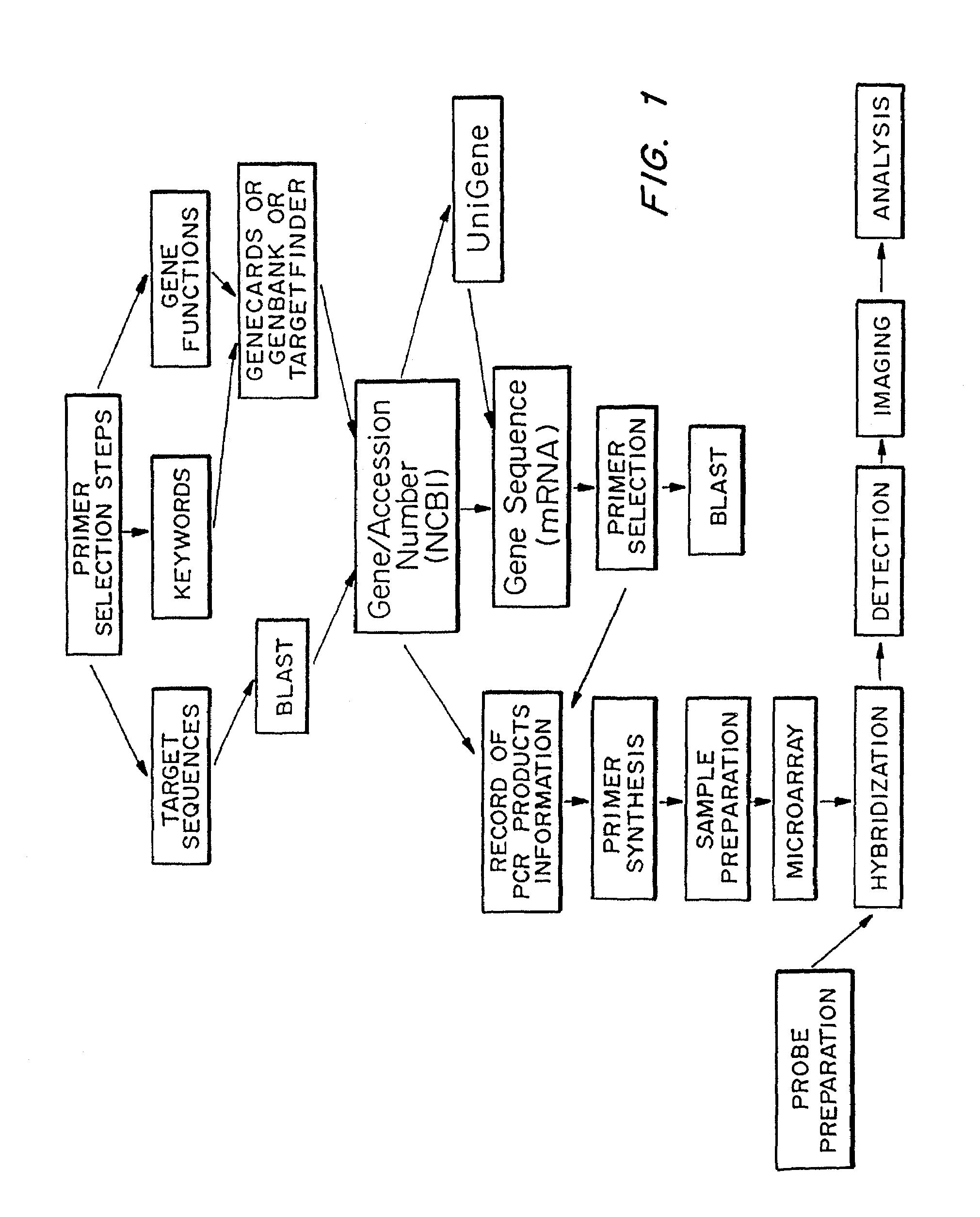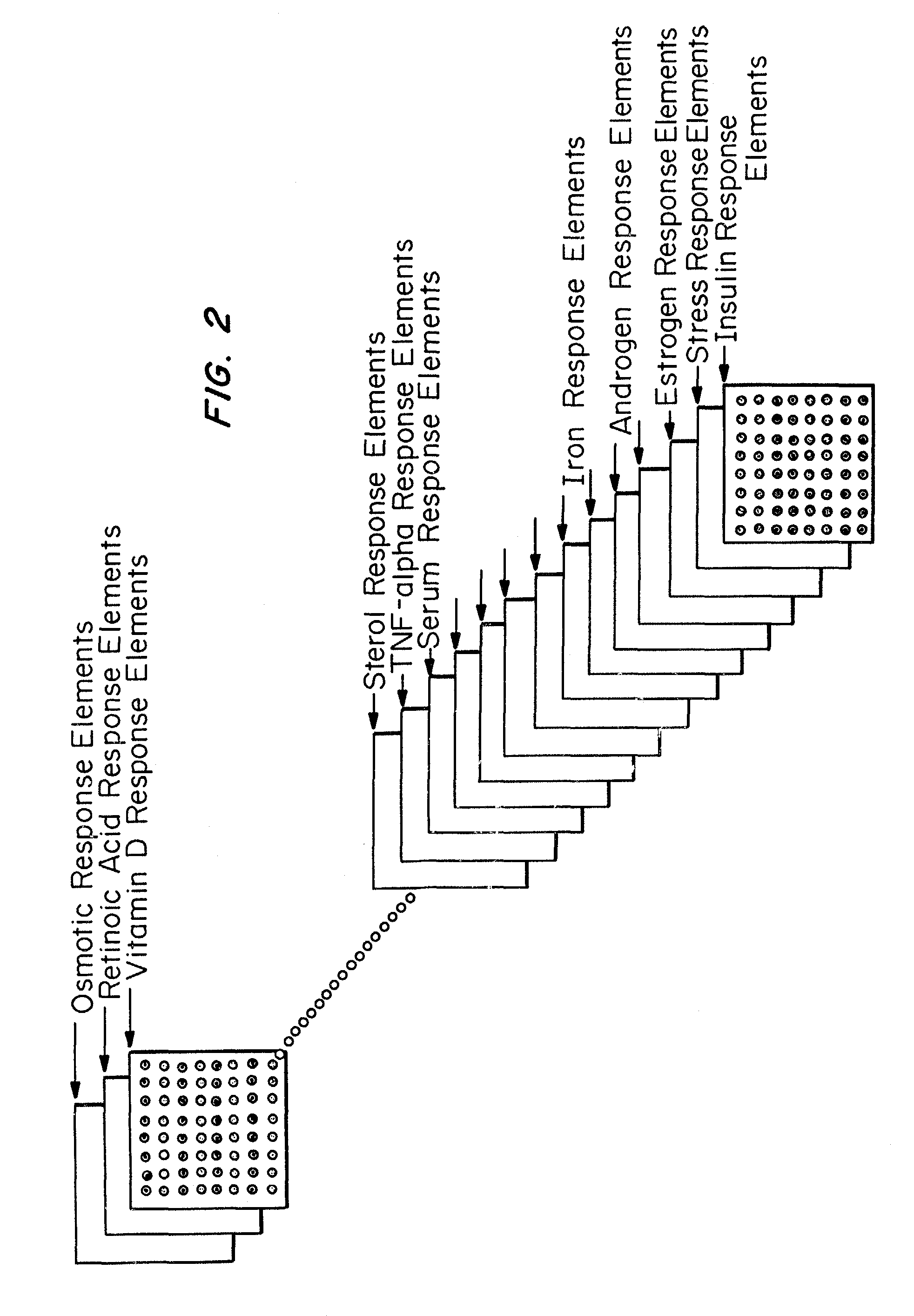Microarrays to screen regulatory genes
a technology of regulatory genes and microarrays, applied in the field of microarrays to screen regulatory genes, can solve the problems of inability to meet the demand of high-throughput technology, lack of expanded vision of how each particular single gene functions in the context of many sister genes or partners, and limitations of techniques, etc., to achieve the effect of minimising cross-reactivity and facilitate the process
- Summary
- Abstract
- Description
- Claims
- Application Information
AI Technical Summary
Problems solved by technology
Method used
Image
Examples
example 1
Selection of Primers
Define the Project
[0069]Search literature, databases, and other contacts for genes and key words to determine the core element of the target genes in the species of interest. Using the above information, locate several different 8–15 base sequences containing the core element from several genes. It is possible to make use of genes from various species.
Turn on the Computer.
[0070]Open Internet Explorer and go to TargetFinder (http: / / hercules.tigem.it / TargetFinder.html). Check “promoter”, “TATA”, “CAAT”, and possibly “enhancer” and “5′UTR” if finding genes is difficult. Scroll down and select specifies, core similarity (usually 1.0), matrix similarity (>0.85), and designate “both strands”. All other parameters remain at default values.
[0071]Enter chosen sequences in the box according to the following IG format:
[0072]
;seq1ATCTTTGTT1;seq2ATCATTCCC1;seq3GTCACTCTA1
[0073]Enter your e-mail address to receive the results, which will probably take overnight. When you receiv...
PUM
| Property | Measurement | Unit |
|---|---|---|
| storage volume | aaaaa | aaaaa |
| diameter | aaaaa | aaaaa |
| melting point | aaaaa | aaaaa |
Abstract
Description
Claims
Application Information
 Login to View More
Login to View More - R&D
- Intellectual Property
- Life Sciences
- Materials
- Tech Scout
- Unparalleled Data Quality
- Higher Quality Content
- 60% Fewer Hallucinations
Browse by: Latest US Patents, China's latest patents, Technical Efficacy Thesaurus, Application Domain, Technology Topic, Popular Technical Reports.
© 2025 PatSnap. All rights reserved.Legal|Privacy policy|Modern Slavery Act Transparency Statement|Sitemap|About US| Contact US: help@patsnap.com


